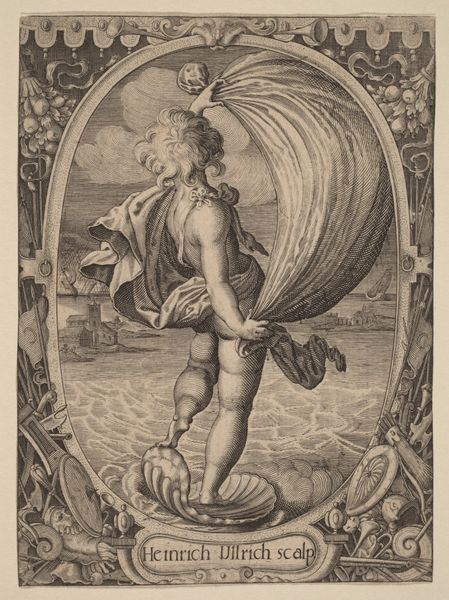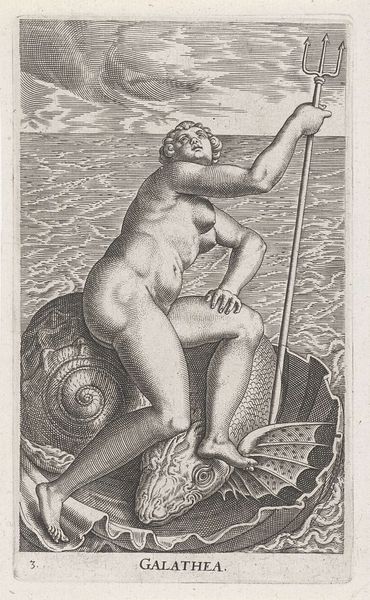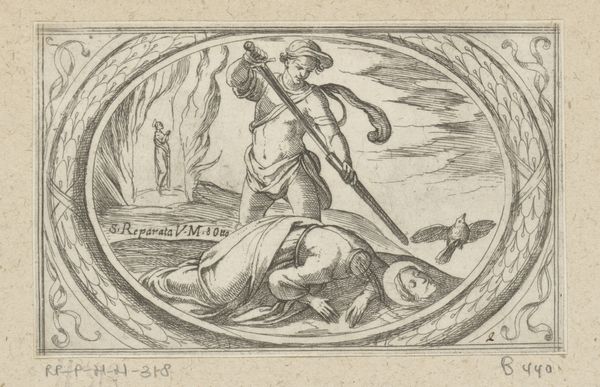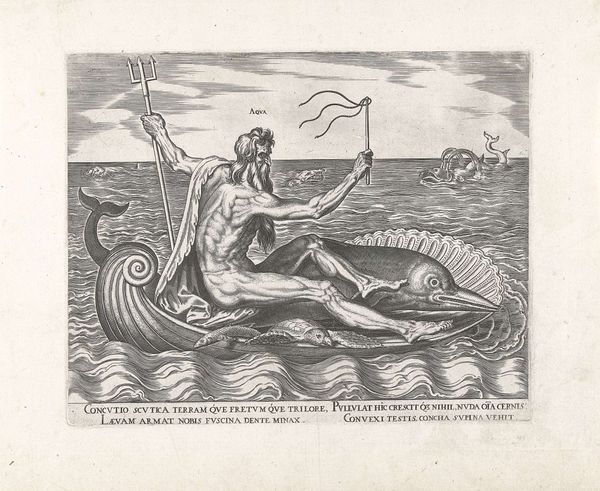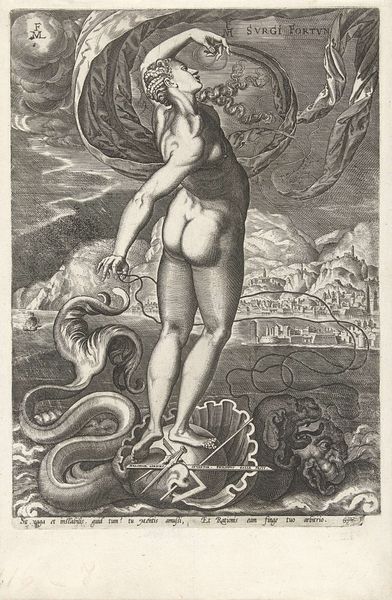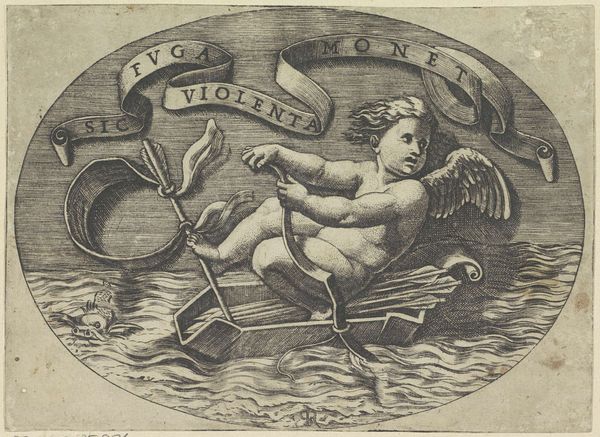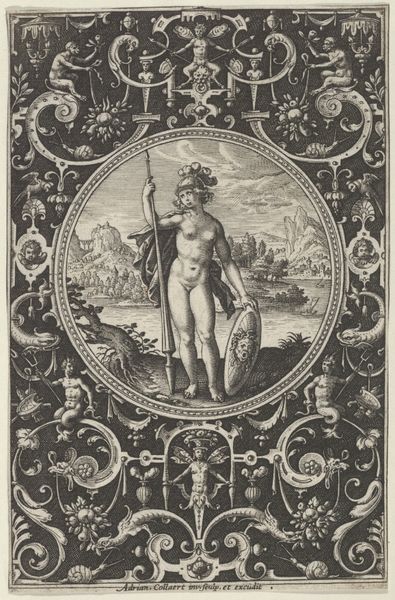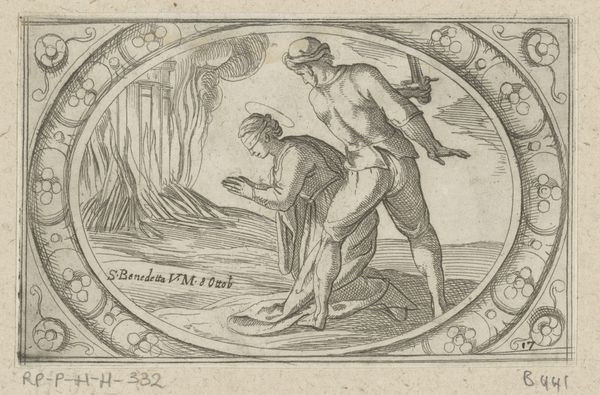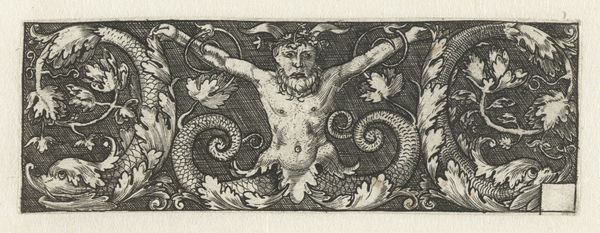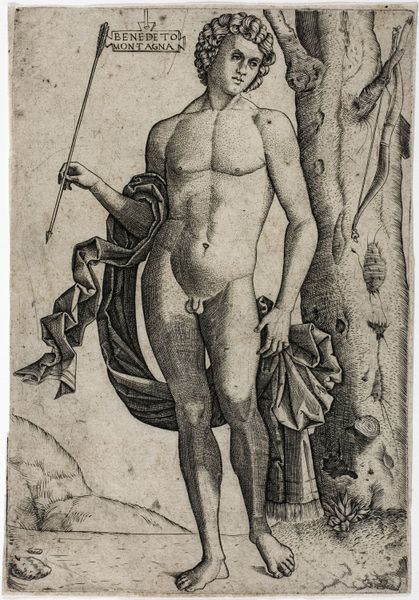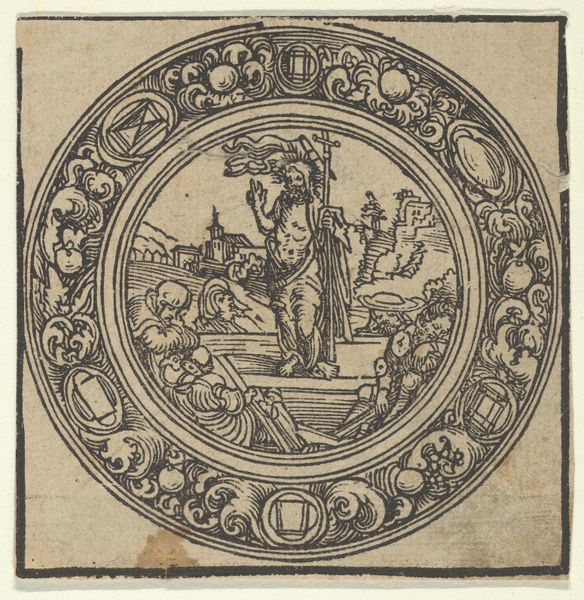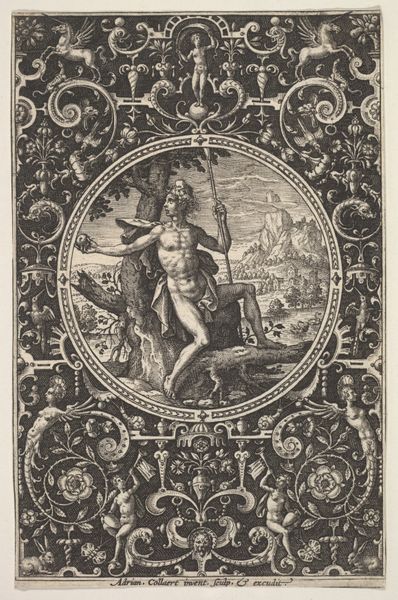
engraving
#
old engraving style
#
figuration
#
11_renaissance
#
history-painting
#
engraving
Dimensions: height 164 mm, width 114 mm
Copyright: Rijks Museum: Open Domain
Curator: Looking at this engraving, it's immediately striking how assured and celebratory it feels. Editor: Yes, a real sense of buoyant triumph. Before us is "Drukkersmerk van Johannes Oporinus," a printer's mark created sometime between 1517 and 1568, now residing at the Rijksmuseum. Oporinus was a significant figure in Renaissance printing. This engraving served as his emblem. Curator: Ah, so it’s branding! Tell me more. The central figure with a flowing drape and fiddle really pulls the eye, along with that dolphin. There is the sea underneath too. What do those images invoke for you? Editor: The figure, I believe, embodies the concept of virtue overcoming adversity. The man is likely Arion, a famed musician saved by a dolphin from drowning. See how he stands confidently upon the back of the sea creature? Arion represents artistic excellence, literary prowess, even survival. This tells me about Oporinus’ self-perception and also a particular political stance toward those around him. Curator: It's a very clear image. It has the message written in a semi-circle above: "Invia virtuti nulla est via." Editor: Precisely! "For virtue, no road is impassable," quite fitting for a printer navigating the complex world of Renaissance publishing. Curator: Absolutely, Oporinus himself faced censorship and religious conflict. His virtue being associated with navigating tumultuous paths resonates. And what of the dolphin, beyond its role in the Arion myth? Editor: The dolphin holds layered meanings. It's associated with safe passage, speed, and intelligence – all valuable assets in Oporinus' line of work. The sea itself represents both the dangers and opportunities inherent in disseminating knowledge. Curator: So, beyond personal branding, Oporinus is also making a claim about the power of knowledge, framed by classical ideals, right? It reflects the Renaissance project itself: retrieving classical values, and championing those through education and philosophy. Editor: Yes! Oporinus crafted an image meant to inspire confidence and signal the kind of works he championed—thoughtful, humanist texts, produced with integrity. A really great expression of personal and intellectual aspirations through emblematic imagery. Curator: I see the print not just as a relic from a particular printmaker but also as an inspirational symbol for our current world. This image encapsulates so much about cultural survival, freedom of thought and expression across time. Editor: Indeed. It's a visual reminder that perseverance, guided by wisdom and artistic merit, can overcome any obstacle.
Comments
No comments
Be the first to comment and join the conversation on the ultimate creative platform.
